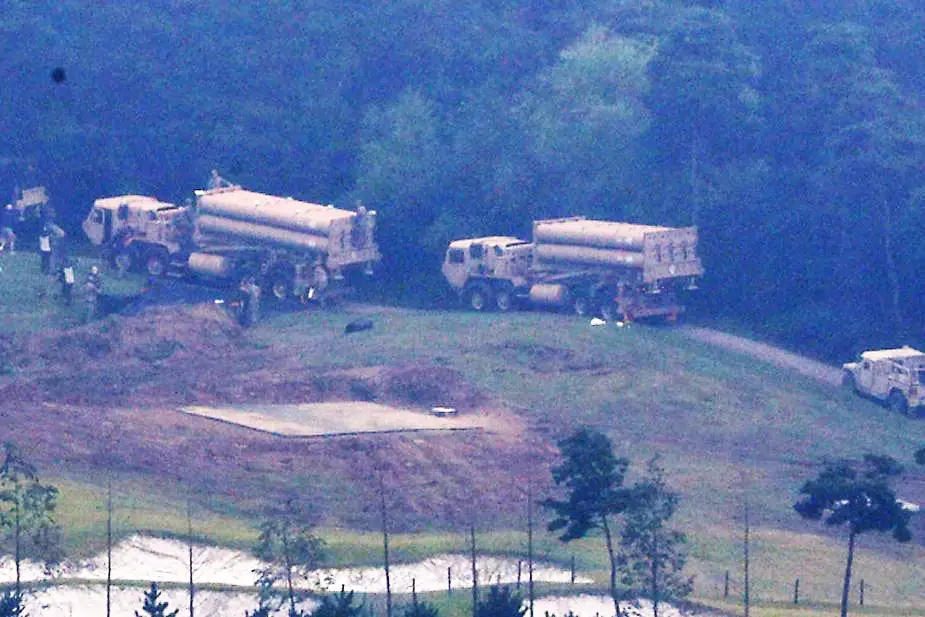Breaking news
US to possibly deploy more THAAD air defense systems in South Korea.
According to Byun Duk-kun from Yonhap news agency, the United States may discuss deploying additional THAAD missile air defense units to South Korea if requested by Seoul's incoming administration, a state department spokesperson said Wednesday, May 4. The remarks come after North Korea launched a ballistic missile on the same day (Seoul time), marking its 14th known show of force this year.
Follow Army Recognition on Google News at this link

THAAD launchers enter the US military base in Seongju, in 2017 (Picture source: YonHap)
"Every country has the inherent right to self-defense," Ned Price said when asked if the U.S. might consider deploying additional THAAD units to South Korea if requested by South Korea's new Yoon Suk-yeol administration. "As I said before, our commitment to the defense of our treaty allies, the ROK, in this case, is ironclad. These will be discussions that we will have as allies regarding how best we can see to it that our commitment to the defense of the ROK remains ironclad," the spokesperson added, referring to South Korea by its official name, the Republic of Korea. South Korea currently hosts a U.S. THAAD unit, but the 2016 decision to host the unit received severe economic repercussions from China. The U.S.State Department spokesperson argued China too has recognized the danger of North Korea's missile launches, adding, "each of these provocations has been a violation of multiple U.N. Security Council resolutions".
On June 2, 2020, Army Recognition published that U.S. forces in Korea and the South Korean army had put in place new interceptor missiles onto Terminal High Altitude Area Defense (THAAD) base in Seongju, North Gyeongsang Province, on Friday, May 29.
Terminal High Altitude Area Defense (THAAD), formerly Theater High Altitude Area Defense, is an American anti-ballistic missile defense system designed to shoot down short-, medium-, and intermediate-range ballistic missiles in their terminal phase (descent or reentry) by intercepting with a hit-to-kill approach. THAAD was developed after the experience of Iraq's Scud missile attacks during the Gulf War in 1991. The THAAD interceptor carries no warhead but relies on the kinetic energy of the impact to destroy the incoming missile. A kinetic energy hit minimizes the risk of exploding conventional-warhead ballistic missiles, and the warhead of nuclear-tipped ballistic missiles will not detonate upon a kinetic energy hit.
Originally a U.S. Army program, THAAD has come under the umbrella of the Missile Defense Agency. The U.S. Navy has a similar program, the sea-based Aegis Ballistic Missile Defense System, which also has a land component ("Aegis ashore"). THAAD was originally scheduled for deployment in 2012, but its initial deployment took place in May 2008.THAAD has been deployed in Guam, the United Arab Emirates, Israel, Romania, and South Korea.



















